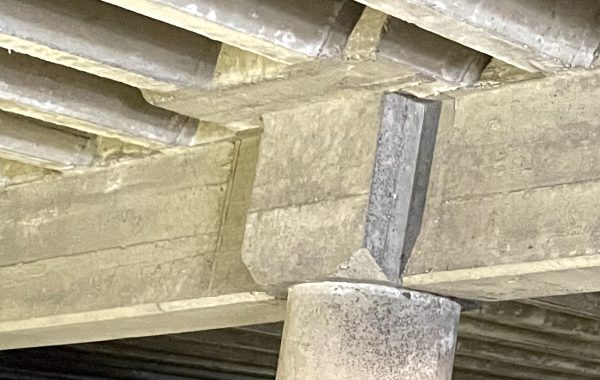This post was triggered by a spot-on question from Julia Manglitz about my comments on the fourth Rocky River Bridge. The main structure of that bridge consists of unreinforced concrete arches, and Julia asked “I’m curious about any thoughts you have on the relative durability of reinforced versus non? It seems as though reinforcement corrosion plays a big role in concrete deterioration, but it’s certainly not the only mechanism.” I’m going to give my opinion on that question in a somewhat round-about manner.
That’s the Taft Bridge in Washington DC above, as seen around 1908, when it was still called the Connecticut Avenue Bridge. This was just after it had been completed, and was being billed as the largest concrete bridge in the world. Its engineer was George Morison, who was in 1900 about as big a deal as a civil engineer could be in the US. The main structure of the Taft Bridge is, again, unreinforced-concrete arches, while the deck structure is reinforced concrete. So, why? And also, what does it mean in the long run?
The most important factor in this issue is the state of concrete design in the US in 1897 to 1907, as the Taft Bridge was built. (Realistically, the design was probably substantially complete a few years before the work ended.) In the 1890s, engineers here were still arguing about the basic constituents of concrete, although most more or less accepted some mixture of Portland cement, sand, gravel (or stones), and water. There was no consistent acceptance of the allowable stresses in concrete, or the load distribution between concrete and reinforcing. By 1907, the linear-elastic theory of moment analysis was generally accepted here (it had been in use for some time in Europe) but the allowable stresses used with it were still hotly debated. By modern standards, reinforced-concrete designs from that era are generally conservative on stress but badly lacking in continuity.
At the same time, the pre-computer era had closed-form equations to solve arches. This form of analysis required a lot of care in setting up the geometry and loads, but gave reasonably accurate answers for the stress distribution within an arch of a homogeneous material. Those equations could, of course, be used for masonry arches, but they worked just as well for unreinforced concrete. So the structure of the bridge makes sense: for the main structure, Morison used masonry arches, with the masonry being unreinforced concrete. For the thin deck, with its much shorter spans, he used the more-modern reinforced concrete.
Unreinforced concrete cracks for the same reason and in the same way as masonry: if it has significant tension, it will split perpendicular to the line of force. A series of arches like this bridge shouldn’t have much tension, but there can be stress concentrations, for example where the upper spandrel arches meet the main arches. (Keep in mind that shear in a brittle material will manifest as diagonal tension, so there can be tension cracks in places where tension is not the main stress.) Once cracks have formed, they tend to suffer from accelerated weathering compared to the finished face of the material, particularly if the climate is cold enough to have freeze-thaw cycles. Reinforced concrete, on the other hand, is assumed to always have cracks on the tension face of a beam or slab. Those cracks are the way that the tension is transferred to the rebar; the rebar is what keeps the cracks from spreading too wide. The cracks also tend to be where rusting of rebar starts. Rusting rebar is the most destructive form of weathering for reinforced concrete, as rust-jacking creates secondary cracking and spalls in an area where the rebar is being weekend by material loss.
So… Reinforced concrete suffers from rebar deterioration once the natural protection that the cement provides to the rebar breaks down, but the rebar also prevents structural cracks from growing. Also, an old reinforced-concrete structure like the bridge deck may have been designed for low material stresses, which means that there may be less cracking than a modern design would have. Unreinforced concrete can develop extensive cracks that do not represent structural threats, because they do not interfere with the line of compression in the arches, but serve as starting points for weathering. Overall, the weathering in reinforced concrete probably starts slower but accelerates faster and is more dangerous. Choose your poison.



